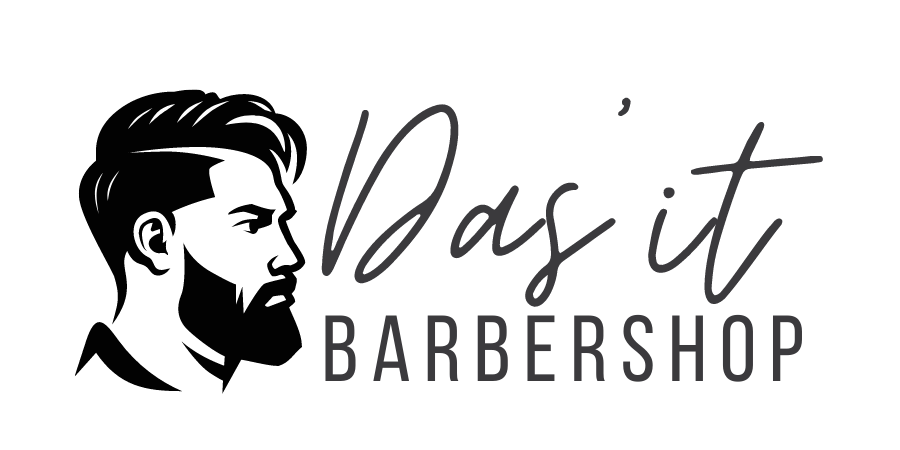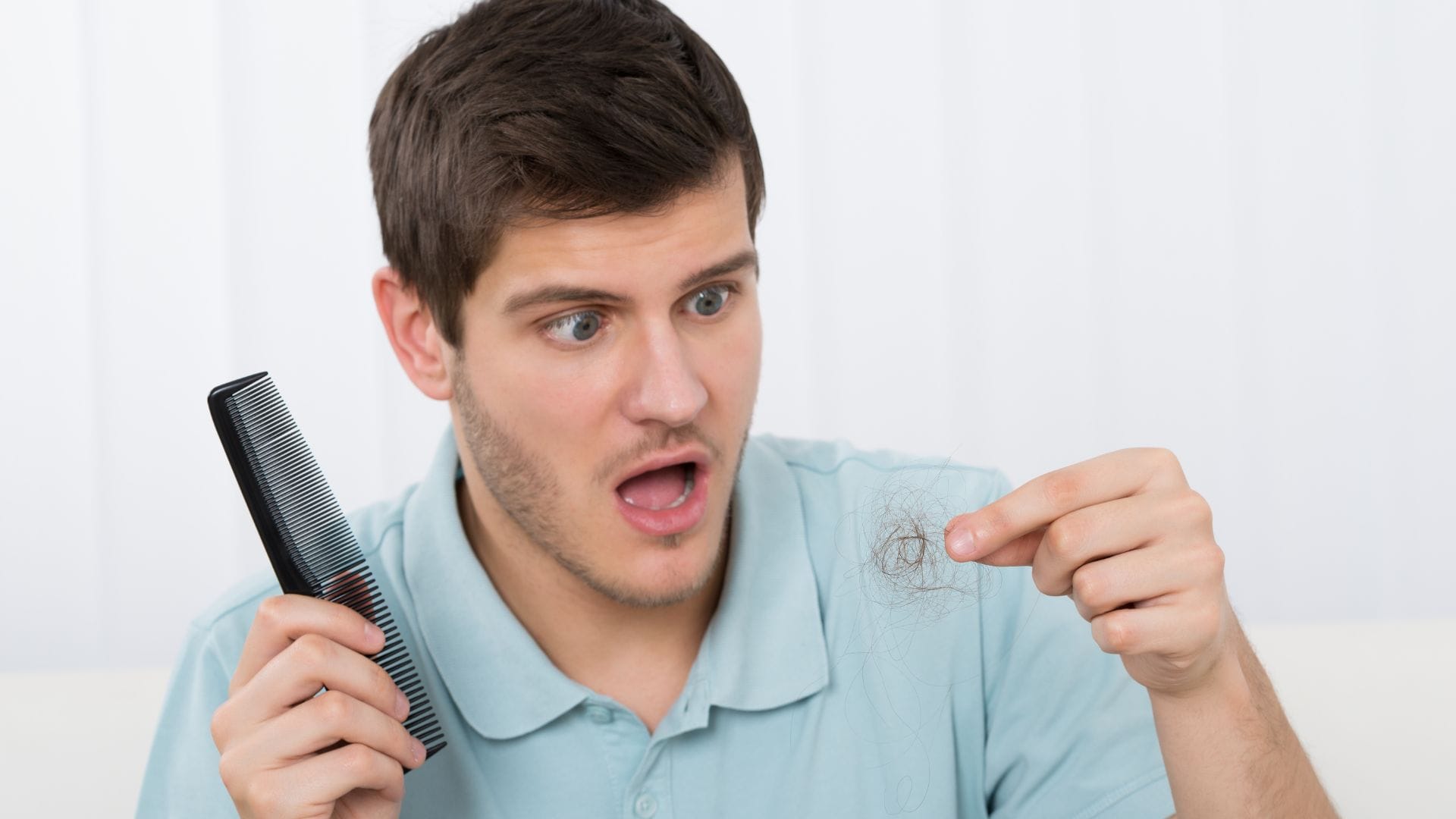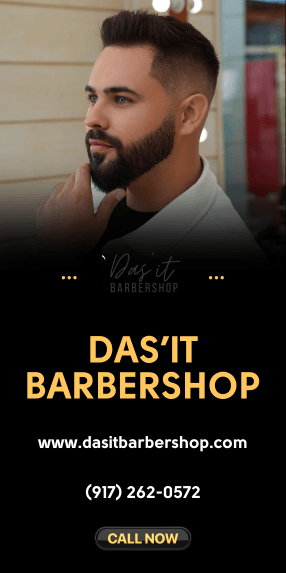Hair damage is an all-too-common issue that affects people of all hair types, including curly hair. Whether it’s due to heat styling, overprocessing, or environmental factors, damaged hair can lead to frustration and bad hair days. The good news is that there are effective strategies you can adopt to restore and maintain your hair’s health. This listicle provides 14 actionable tips from the experts at New York Barbershop to help you manage hair damage and keep your locks looking their best.
1.Regular Trims
Regular trims are crucial for maintaining healthy hair, regardless of whether you have straight, wavy, or curly hair. Trimming your hair every 6-8 weeks helps remove split ends and prevents further damage from spreading up the hair shaft. When split ends are left unattended, they can travel upwards, causing frizz and an overall dull appearance. Consistent trims will keep your hair looking fresh and healthy, allowing it to grow stronger over time. Additionally, regular visits to the barber or stylist can help in identifying any emerging issues with your hair’s condition, providing a proactive approach to hair maintenance.
2.Proper Hair Washing
Washing your hair correctly is essential for its health. The temperature of the water you use is an important factor; lukewarm water is ideal, as hot water can strip away the natural oils that protect and nourish your hair. This is especially significant for curly hair, which is prone to dryness.
Choose a shampoo and conditioner suited to your hair type, as they can provide the specific nutrients and benefits your hair needs. For curly hair, sulfate-free products are preferable to retain moisture and maintain curl definition. It’s also important to avoid washing your hair too frequently; for most hair types, 2-3 times a week is sufficient to keep your hair clean without over-stripping it of essential oils.
3. Heat Styling Safely
While heat styling can create beautiful looks, it can also cause significant damage if not done safely. To begin with, always use a heat protectant spray before using any heat styling tools such as flat irons, curling wands, or blow dryers.
These sprays are designed to create a protective barrier around your hair, minimizing the direct impact of the high temperatures. It’s also crucial to keep the temperature settings on your styling tools at a medium range; excessively high heat can weaken the hair’s protein structure, leading to breakage and split ends.
Additionally, try to limit heat styling to special occasions rather than making it a daily routine. Embracing heat-free styles or air-drying your hair more often can give your locks a much-needed break from the stress of heat exposure, helping maintain their strength and natural beauty over time.
4. Protecting from the Sun
Just like your skin, your hair needs protection from the sun’s harmful UV rays. Prolonged exposure to UV rays can lead to dry, brittle hair and fading of color-treated locks. For effective sun protection, consider wearing a wide-brimmed hat or a scarf to physically shade your hair from direct sunlight. This not only helps protect your hair but also adds a stylish element to your outdoor ensemble. Another effective method is to apply a UV-protectant spray designed specifically for hair before heading out.
These sprays typically contain UV filters that form a protective shield over your hair, reducing the damaging effects of the sun. For those who spend a significant amount of time outdoors, incorporating such protective measures into your daily routine is crucial. This is particularly important for managing curly hair, which can be more prone to dryness and damage due to its unique structure. Curly hair tends to have more open cuticles, making it susceptible to moisture loss and environmental stressors. By conscientiously shielding your hair from the sun, you help preserve its moisture, elasticity, and overall health—keeping it vibrant and strong.
5. Nourishing Hair Masks
Hair masks offer a targeted approach to deeply nourish and repair damaged hair, providing intensive care to restore its vitality. They work by penetrating the hair shaft and delivering essential nutrients that can enhance the overall health and appearance of your hair. One of the simplest ways to indulge in this treatment is by crafting your own DIY hair masks using natural ingredients available in your kitchen. Ingredients like avocado, honey, and coconut oil are particularly beneficial. Avocado is rich in vitamins, fatty acids, and minerals, making it ideal for moisturizing and strengthening the hair. Honey acts as a humectant, drawing moisture into the hair, while coconut oil is known for its ability to reduce protein loss and add shine.
To create a DIY hair mask, mash a ripe avocado and mix it with a tablespoon of honey and two tablespoons of coconut oil. Apply the mixture generously to your hair, ensuring even coverage from roots to tips. Wrap your hair in a warm towel or cap to encourage deeper penetration as you leave it on for at least 30 minutes before rinsing thoroughly.
For those who prefer ready-made solutions, professional hair masks available at salons can be tailored to address specific hair concerns. These treatments often contain concentrated formulations enriched with keratin, proteins, and other fortifying agents for intensive repair.
Incorporating a hair mask into your weekly hair care routine can yield noticeable benefits. Regular application helps improve texture, manageability, and resilience, especially for hair exposed to environmental stressors or frequent styling. By allowing these nourishing treatments to become a mainstay in your regimen, you promote healthy, shiny, and more manageable hair, fostering its natural beauty over time.
6. Avoiding Overprocessing
Coloring, perming, and chemical straightening can wreak havoc on your hair if done too frequently. These treatments often involve harsh chemicals that strip the hair of its natural oils, weakening the hair shaft and leading to dryness, breakage, and split ends. To maintain healthy hair, it’s essential to space out these treatments, allowing time for your hair to recover between sessions.
When coloring your hair, consider opting for semi-permanent dyes. These are less harsh than permanent ones because they deposit color without penetrating the hair shaft with ammonia or other strong chemicals. Semi-permanent dyes gradually wash out over time, providing a more subtle color change that requires less frequent retouching. In addition, they often contain conditioning agents that can help maintain moisture and softness.
For those who undergo perming or straightening, using products specifically designed to minimize damage is crucial. These products can include deep conditioners, heat protectants, and hair serums formulated to strengthen and protect the hair. By investing in high-quality care products and limiting the frequency of chemical treatments, you can enjoy stylish, vibrant hair without sacrificing its health and integrity.
7. Nutritious Diet
A balanced diet rich in vitamins and minerals is critical for healthy hair. Essential nutrients like biotin, vitamin E, and omega-3 fatty acids play vital roles in maintaining hair strength and shine. Biotin, also known as vitamin B7, contributes to the production of keratin, a protein that makes up the structure of hair. Foods high in biotin include eggs, almonds, and avocados.
Vitamin E acts as an antioxidant that helps repair and build tissue, which is crucial for hair follicles to remain healthy. You can find vitamin E in foods like sunflower seeds, spinach, and broccoli.
Omega-3 fatty acids, found in fatty fish such as salmon, mackerel, and sardines, help nourish the hair follicles, supporting hair growth and luster. They also maintain scalp health, preventing dryness and flakiness. In addition to these nutrients, staying hydrated by drinking plenty of water is essential, as it helps transport vital nutrients to the hair cells and keeps the scalp moisturized.
8. Stress Management
Stress can have a profound effect on your hair, potentially leading to issues like thinning, shedding, and breakage due to conditions such as telogen effluvium, where stress pushes hair follicles into a resting phase. Practicing stress management techniques is essential for overall well-being and, consequently, healthier hair. Integrate activities such as yoga and meditation into your routine to foster relaxation and mental clarity.
These practices help reduce cortisol levels, a hormone linked to stress that can negatively impact hair growth. Regular physical exercise is another effective stress-relief strategy that promotes the release of endorphins, enhancing mood and improving sleep quality—both crucial factors for hair health. By adopting stress management strategies, you create a holistic approach to maintaining not only your mental and emotional wellness but also the vitality and beauty of your hair.
9. Choosing the Right Products
Selecting the right hair care products can make a world of difference in maintaining the health and appearance of your hair. The first step is to assess your hair type and its specific needs, which can range from oily, dry, curly, straight, damaged, or color-treated. Once you’ve identified this, you can opt for shampoos, conditioners, and treatments specifically formulated to address those characteristics.
When evaluating hair products, it’s crucial to scrutinize the ingredient list. Avoid products laden with harsh chemicals like sulfates and parabens. Sulfates, often used as cleansing agents, can strip natural oils from your scalp and hair, leading to dryness and brittleness. Parabens, used as preservatives, may contribute to scalp irritation and long-term damage. Instead, look for products containing nourishing ingredients such as natural oils, vitamins, and botanicals that provide hydration, strengthen hair strands, and protect the scalp.
Additionally, tailored treatments like leave-in conditioners, serums, and hair masks can offer extra hydration and protection. These products often contain beneficial compounds like keratin and argan oil that help repair and fortify damaged hair. By investing time in selecting the right products and understanding their ingredients, you ensure that your hair receives the proper care it deserves, ultimately leading to healthier and more resilient strands.
10. Overnight Conditioning
Overnight conditioning treatments are a surefire way to revitalize and deeply nourish damaged hair, offering a concentrated dose of moisture and repair while you sleep. The process begins with applying a generous amount of leave-in conditioner or hair oil, focusing on the ends of your hair, which are often the most vulnerable to damage. It’s essential to choose products that are rich in natural oils or proteins to facilitate repair.
Once applied, gently wrap your hair in a silk scarf or bonnet to prevent tangling and to retain moisture. Sleeping in silk not only helps to reduce friction but also maintains your hair’s natural oils. In the morning, rinse your hair thoroughly to reveal noticeably softer and more manageable locks. This routine, when performed regularly, can improve your hair’s overall texture and resilience, making it an invaluable part of your hair care regimen.
11. Protective Styles
Incorporating protective hairstyles into your routine is an effective strategy for minimizing hair damage and fostering growth. Styles such as braids, twists, or buns significantly reduce the need for daily styling, thus lessening the physical stress on your hair. By shielding hair from environmental elements like UV rays and pollution, these styles preserve the hair’s integrity and moisture levels.
However, it’s crucial to avoid excessively tight styles that can lead to tension and breakage around the hairline and scalp. Instead, opt for looser variations that distribute weight evenly and allow your scalp to breathe. By striking the perfect balance between protection and style, these hairstyles not only maintain health but also encourage hair growth, enabling you to enjoy longer, stronger, and healthier hair over time.
12. Proper Detangling
Detangling your hair gently is essential to prevent breakage, especially for those with curly or textured hair types. When hair tangles, using force can lead to unnecessary damage, splitting, and breaking strands, which is why a careful approach is crucial. Begin the detangling process with a wide-tooth comb or a specialized detangling brush to avoid snagging or pulling the hair. Always start from the ends of your hair, gently working your way up to the roots to ease out knots and tangles without causing harm.
For the best results, detangle your hair when it’s wet, preferably during the conditioning step of your wash routine. Generously apply a conditioner or detangling product with good slip to encourage smoother comb-through and minimize resistance. This lubrication helps the comb glide through the hair effortlessly, reducing the likelihood of breakage and making the process more manageable. Taking the time to detangle properly can significantly improve hair health by preserving its natural length, elasticity, and minimizing breakage, ultimately contributing to longer, stronger, and healthier hair.
13. Patience with Styling
Taking your time with styling is crucial for avoiding damage and maintaining the health of your hair. When you rush through your hair care routine, you increase the risk of causing breakage, split ends, and other forms of damage. During blow-drying, for instance, use a lower heat setting and a heat protectant product to shield your hair from excessive heat exposure. Carefully section your hair, drying each part meticulously rather than haphazardly blasting your hair all at once.
Similarly, when brushing, select a brush that suits your hair type and texture, and always begin from the ends, working upward to avoid tugging and pulling at knots. Be especially cautious when applying styling products; a light, even application will prevent weighing your hair down or causing build-up. By incorporating a gentle and unhurried approach to your styling routine, you grant your hair the patience it deserves. Over time, this thoughtful care translates to healthier, more resilient hair that can grow and flourish. Your hair will undoubtedly thank you as it becomes less prone to damage, retaining its natural beauty and vitality.
14. Seeking Professional Help
Sometimes, professional intervention is necessary to address severe hair damage. Consulting with a New York barber or stylist can provide you with personalized advice and treatments tailored to your hair’s needs. These professionals are trained to assess various hair concerns, from breakage and split ends to scalp issues and hair thinning. They can recommend specific products, such as deep conditioning treatments or specialized shampoos, that are best suited for your individual hair type. Additionally, they can offer in-salon treatments that can help restore hair health more effectively than at-home remedies, such as keratin treatments or custom-blended hair masks.
Do not hesitate to seek expert help when needed, as even a single professional session can provide invaluable insights and solutions. Regular check-ins with a stylist can also help you maintain healthy hair long-term, ensuring that any arising issues are addressed promptly. Embracing professional guidance is not a sign of failure; rather, it is a proactive step towards preserving the integrity and beauty of your hair. Moreover, the expert advice you’ll receive can empower you to better understand your hair’s unique needs, leading to a more informed and confident approach to your hair care routine.
Conclusion
Managing hair damage requires a combination of the right techniques, products, and a healthy lifestyle. By incorporating these 14 tips into your routine, you can transform your bad hair days into ones filled with confidence and healthy, beautiful hair. Ready to take the next step? Visit our New York Barbershop for a consultation and discover the best solutions for your hair care needs.


